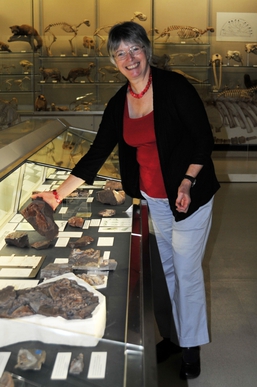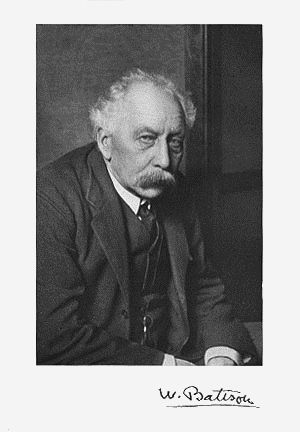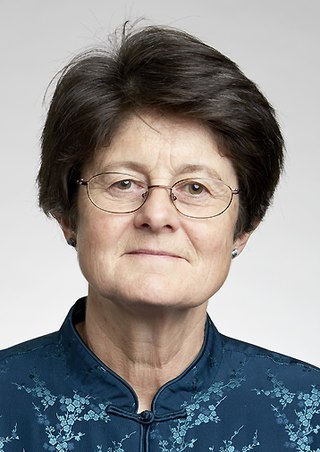Related Research Articles

A mammal is a vertebrate animal of the class Mammalia. Mammals are characterized by the presence of milk-producing mammary glands for feeding their young, a neocortex region of the brain, fur or hair, and three middle ear bones. These characteristics distinguish them from reptiles and birds, from which their ancestors diverged in the Carboniferous Period over 300 million years ago. Around 6,400 extant species of mammals have been described and divided into 29 orders.

Sexual selection is a mode of natural selection in which members of one biological sex choose mates of the other sex to mate with, and compete with members of the same sex for access to members of the opposite sex. These two forms of selection mean that some individuals have greater reproductive success than others within a population, for example because they are more attractive or prefer more attractive partners to produce offspring. Successful males benefit from frequent mating and monopolizing access to one or more fertile females. Females can maximise the return on the energy they invest in reproduction by selecting and mating with the best males.

The zebu, sometimes known in the plural as indicine cattle, Camel cow or humped cattle, is a species or subspecies of domestic cattle originating in South Asia. Zebu, like many Sanga cattle breeds, differs from taurine cattle by a fatty hump on their shoulders, a large dewlap, and sometimes drooping ears. They are well adapted to withstanding high temperatures and are farmed throughout the tropics.

The meerkat or suricate is a small mongoose found in southern Africa. It is characterised by a broad head, large eyes, a pointed snout, long legs, a thin tapering tail, and a brindled coat pattern. The head-and-body length is around 24–35 cm (9.4–13.8 in), and the weight is typically between 0.62 and 0.97 kg. The coat is light grey to yellowish-brown with alternate, poorly-defined light and dark bands on the back. Meerkats have foreclaws adapted for digging and have the ability to thermoregulate to survive in their harsh, dry habitat. Three subspecies are recognised.

Jennifer Alice Clack, was an English palaeontologist and evolutionary biologist. She specialised in the early evolution of tetrapods, specifically studying the "fish to tetrapod" transition: the origin, evolutionary development and radiation of early tetrapods and their relatives among the lobe-finned fishes. She is best known for her book Gaining Ground: the Origin and Early Evolution of Tetrapods, published in 2002 and written with the layperson in mind.

William Bateson was an English biologist who was the first person to use the term genetics to describe the study of heredity, and the chief populariser of the ideas of Gregor Mendel following their rediscovery in 1900 by Hugo de Vries and Carl Correns. His 1894 book Materials for the Study of Variation was one of the earliest formulations of the new approach to genetics.

Sir Paul Patrick Gordon Bateson, was an English biologist with interests in ethology and phenotypic plasticity. Bateson was a professor at the University of Cambridge and served as president of the Zoological Society of London from 2004 to 2014.
Juliet Clutton-Brock, FSA, FZS was an English zooarchaeologist and curator, specialising in domesticated mammals. From 1969 to 1993, she worked at the Natural History Museum. Between 1999 and 2006, she was the managing editor of the Journal of Zoology.
In evolution, cooperation is the process where groups of organisms work or act together for common or mutual benefits. It is commonly defined as any adaptation that has evolved, at least in part, to increase the reproductive success of the actor's social partners. For example, territorial choruses by male lions discourage intruders and are likely to benefit all contributors.
Sex allocation is the allocation of resources to male versus female reproduction in sexual species. Sex allocation theory tries to explain why many species produce equal number of males and females.
Cooperative breeding is a social system characterized by alloparental care: offspring receive care not only from their parents, but also from additional group members, often called helpers. Cooperative breeding encompasses a wide variety of group structures, from a breeding pair with helpers that are offspring from a previous season, to groups with multiple breeding males and females (polygynandry) and helpers that are the adult offspring of some but not all of the breeders in the group, to groups in which helpers sometimes achieve co-breeding status by producing their own offspring as part of the group's brood. Cooperative breeding occurs across taxonomic groups including birds, mammals, fish, and insects.
The Kalahari Meerkat Project, or KMP, is a long term research project focused on studying the evolutionary causes and ecological consequences of cooperative behaviors in meerkats. The secondary aims of the project are to determine what factors affect the reproductive success of the meerkats and what behavioral and physiological mechanisms control both reproduction and cooperative behavior. The project is also working on monitoring overall plant and animal populations within the reserve and work with the nearby community of Van Zylsrus in the areas of conservation and sustainable use of resources.
Paul H. Harvey is a British evolutionary biologist. He is Professor of Zoology and was head of the zoology department at the University of Oxford from 1998 to 2011 and Secretary of the Zoological Society of London from 2000 to 2011, holding these posts in conjunction with a professorial fellowship at Jesus College, Oxford.

Primatomorpha is a proposed mirorder of mammals containing the orders Dermoptera and Primates. Primatomorpha is sister to Scandentia, together forming the Euarchonta.
In animal behaviour, the hypothesis of group augmentation is where animals living in a group behave so as to increase the group's size, namely through the recruitment of new members. Such behaviour could be selected for if larger group size increases the chance of survival of the individuals in the group. Supported hypothesis of selection mechanisms towards increasing group size currently exist, in helping raise other animals' offspring and performing other cooperative breeding acts including kin selection. It is currently proposed that group augmentation may be another mechanism which occurs through the recruiting of new group members and helping of unrelated individuals within a group.

Sexual selection in mammals is a process the study of which started with Charles Darwin's observations concerning sexual selection, including sexual selection in humans, and in other mammals, consisting of male–male competition and mate choice that mold the development of future phenotypes in a population for a given species.
Inbreeding avoidance, or the inbreeding avoidance hypothesis, is a concept in evolutionary biology that refers to the prevention of the deleterious effects of inbreeding. Animals only rarely exhibit inbreeding avoidance. The inbreeding avoidance hypothesis posits that certain mechanisms develop within a species, or within a given population of a species, as a result of assortative mating and natural and sexual selection, in order to prevent breeding among related individuals. Although inbreeding may impose certain evolutionary costs, inbreeding avoidance, which limits the number of potential mates for a given individual, can inflict opportunity costs. Therefore, a balance exists between inbreeding and inbreeding avoidance. This balance determines whether inbreeding mechanisms develop and the specific nature of such mechanisms.

Josephine M. Pemberton is a British evolutionary biologist. She is Chair of Natural History at the University of Edinburgh, where she conducts research in parentage analysis, pedigree reconstruction, inbreeding depression, parasite resistance, and quantitative trait locus (QTL) detection in natural populations. She has worked primarily on long-term studies of soay sheep on St Kilda, and red deer on the island of Rùm.

Anne Carla Ferguson-Smith is a mammalian developmental geneticist. She is the Arthur Balfour Professor of Genetics and Pro-Vice Chancellor for Research and International Partnerships at the University of Cambridge. Formerly head of the Department of Genetics at the University of Cambridge, she is a Fellow of Darwin College, Cambridge and serves as President of the Genetics Society.
Loeske E. B. KruukFRS is an evolutionary ecologist who is a Royal Society Research Professor at the University of Edinburgh. She was awarded the 2018 European Society for Evolutionary Biology President's Award. In 2023, she was elected as a Fellow of the Royal Society.
References
- ↑ Bateson, Patrick; Barker, David; Clutton-Brock, Timothy; Deb, Debal; D'Udine, Bruno; Foley, Robert A.; Gluckman, Peter; Godfrey, Keith; Kirkwood, Tom; Lahr, Marta Mirazón; McNamara, John; Metcalfe, Neil B.; Monaghan, Patricia; Spencer, Hamish G.; Sultan, Sonia E. (2004). "Developmental plasticity and human health". Nature. 430 (6998): 419–421. Bibcode:2004Natur.430..419B. doi:10.1038/nature02725. ISSN 0028-0836. PMID 15269759. S2CID 4374045.

- 1 2 University of Cambridge, Department of Zoology page for Professor Tim Clutton-Brock FRS Archived 19 January 2012 at the Wayback Machine
- 1 2 Clutton-Brock, Timothy Hugh (1972). Feeding and ranging behaviour of the red colobus monkey (PhD thesis). University of Cambridge. OCLC 500406063. EThOS uk.bl.ethos.451729.
- 1 2 "Tim Clutton-Brock". Department of Zoology, University of Cambridge. Retrieved 19 March 2008.
- ↑ "Fellows by Subject". Magdalene College, Cambridge. Retrieved 20 March 2008.
- ↑ "Faculties of the University of Pretoria" (PDF). University of Pretoria. Retrieved 20 March 2008.
- 1 2 Anon (1993). "Professor Timothy Clutton-Brock FRS". London: Royal Society. One or more of the preceding sentences incorporates text from the royalsociety.org website where:
“All text published under the heading 'Biography' on Fellow profile pages is available under Creative Commons Attribution 4.0 International License.” --Royal Society Terms, conditions and policies at the Wayback Machine (archived 2016-11-11)
- ↑ Tim Clutton-Brock at IMDb
- ↑ "Meerkats: The Zoological Jackpot". National Geographic. Archived from the original on 19 December 2007. Retrieved 19 March 2008.
- ↑ "ISIHighlyCited.com: Clutton-Brock, Timothy H." Thomson Scientific. Retrieved 20 March 2008.
- ↑ "Darwin Medal". Royal Society. Retrieved 21 December 2012.